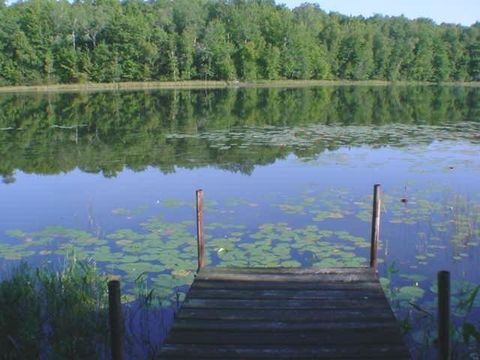A Streamliner to Kelly Lake.
I occasionally indulge in some daydreaming . . . often that involves thinking about some of the train rides I took many decades ago. I remember—I was probably nine or ten at the time—traveling with my family to Wisconsin where my mother’s parents had a summer house on a lake.

I don’t remember much about the house except that the facilities were primitive by today’s standards. How primitive? There was a privy out behind the house and, as far as I know, it was used by everyone—my grandmother and grandfather included.
At any rate, we traveled there from Connecticut by train—from Hartford to Springfield and from there, I suppose, to Chicago where we connected with a train up into Wisconsin and whatever stop was closest to Kelly Lake. I do remember that because it wasn’t just any train; it was a ”streamliner”. My definition of that term in those days being an entire consist with the same livery—more specifically something other than the traditional dark green that seems to have been the standard for sleepers and coaches of the time.
I’m sure the train had a name, although I don’t remember it. What I do remember is the men’s lounge at one end of our sleeper. It fascinated me. I had no idea it was possible to create a facility like that on a train. It was equipped with several sinks, each with hot and cold water faucets and a large mirror, and three enclosed toilet stalls. I remember entering the lounge and seeing several men at the sinks, shaving. There was a haze of cigar smoke in the room—smoking was permitted in those days, of course.
Today’s generation is shocked to learn that those toilets emptied directly onto the tracks, which was and, truthfully, still is the best and most practical solution to the issue of how best to dispose of human waste from a passenger train. That simple and foolproof system remained the accepted norm well into the 1970s. However, thanks to a couple of guys in a rowboat, fishing under a railroad bridge somewhere in Florida as a train passed above them . . . Ah, well, you knew that, right?
In this incredible, modern society, we’ve all become accustomed to scientific and medical breakthroughs, so It’s almost impossible for us to imagine the impact that the coming of the railroad had on the lives of ordinary people 150 years ago. Consider this: until the Baltimore & Ohio Railroad began running passenger trains, no human being had ever traveled faster than a horse could run. I’ve always found that thought to be quite profound.



“Streamliner” is a Chicago and North Western term, suggesting your train from Chicago was the Flambeau 400 as far as Green Bay or Pulaski. Kelly Lake is not far from Coleman, which was a stop for the Chippewa and Copper Country Limited on The Milwaukee Road.
Go You Packers Go.
I was sure someone would have additional info for me. Many thanks. And I have always thought that “streamliner” was pretty much a generic term for any consist with a unique livery, so thanks, too, for that clarification.
Yes, looking through the totality of your story, the sleeper you refer to would have been on New York Central’s New England States, which arrived Chicago in time to connect with the day trains. Now, if you were on a sleeper from Chicago north, that would be on the Ashland Limited, or perhaps the Evening Fisherman. There’s nothing more useful to a ferroequinologist than a few old Official Guides.
Look closely at Chicago and North Western boxcars in old photographs. “Route of the Streamliners” (also used by Union Pacific.) Milwaukee Road was “Route of the Hiawathas.” Burlington, “Way of the Zephyrs.” Santa Fe bragged on its trains by name.
Fascinating stuff. Thanks. I wish I had been older at the time to have appreciated those experiences more. Of course, that would haver meant I would have departed this earth by now and would not be here to enjoy then sublime experience of an overnight ride in a 40-year-old Superliner sleeper.
Ferroequinologist! That’s a new one on me … and I love it!
You’ve never lived next to a railroad track if you think that’s the best way of disposing of human waste! I lived in the Feather River Canyon for many years. The passenger trains were long gone then, but one morning I noticed that a passing freight had hit a porcupine and the corpse was laying between the rails. I ignored it until the maintenance crew came by and tossed it over the bank, where it landed next to my house. I picked it up later and tossed it on to a flatcar that was sitting on the siding and watched as it was pulled away. I thought that was only fair.
Sure sounds fair to me!